Hidden In Plain Sight — The Kinsey Collection Unearths America’s Erased Black History at Houston’s Holocaust Museum
From Slave Ship Doors to Abstract Expressionism, This Striking Exhibit Will Make You Rethink Many American Narratives
BY Ericka Schiche // 06.16.24This triptych painted by artist Mikel Alatza features Bernard, Shirley and Khalil Kinsey. The family owns and operates the Kinsey Collection, which includes historical artifacts, ephemera, books and artworks.
In 1945, Black soldiers from the 183rd Engineer Combat Battalion encountered a pile of bodies in a concentration camp in Buchenwald. As they confronted the aftermath of the Holocaust, their dejection and helplessness was captured in a black-and-white photograph. This photograph, taken by William A. Scott III, is now on display at the Holocaust Museum Houston’s exhibition featuring The Kinsey Collection, which runs through June 23.
Photos and ephemera also tell the story of the legendary 761st Tank Battalion, known as the Black Panthers. They fought in the Battle of the Bulge during World War II and liberated 30 towns and at least one concentration camp — Gunskirchen in Austria. Their motto, “Come out Fighting!” captures the indefatigable spirit and excellence of these soldiers.
In addition to this historical image, the exhibition includes more than 100 historical documents, artifacts and artworks.
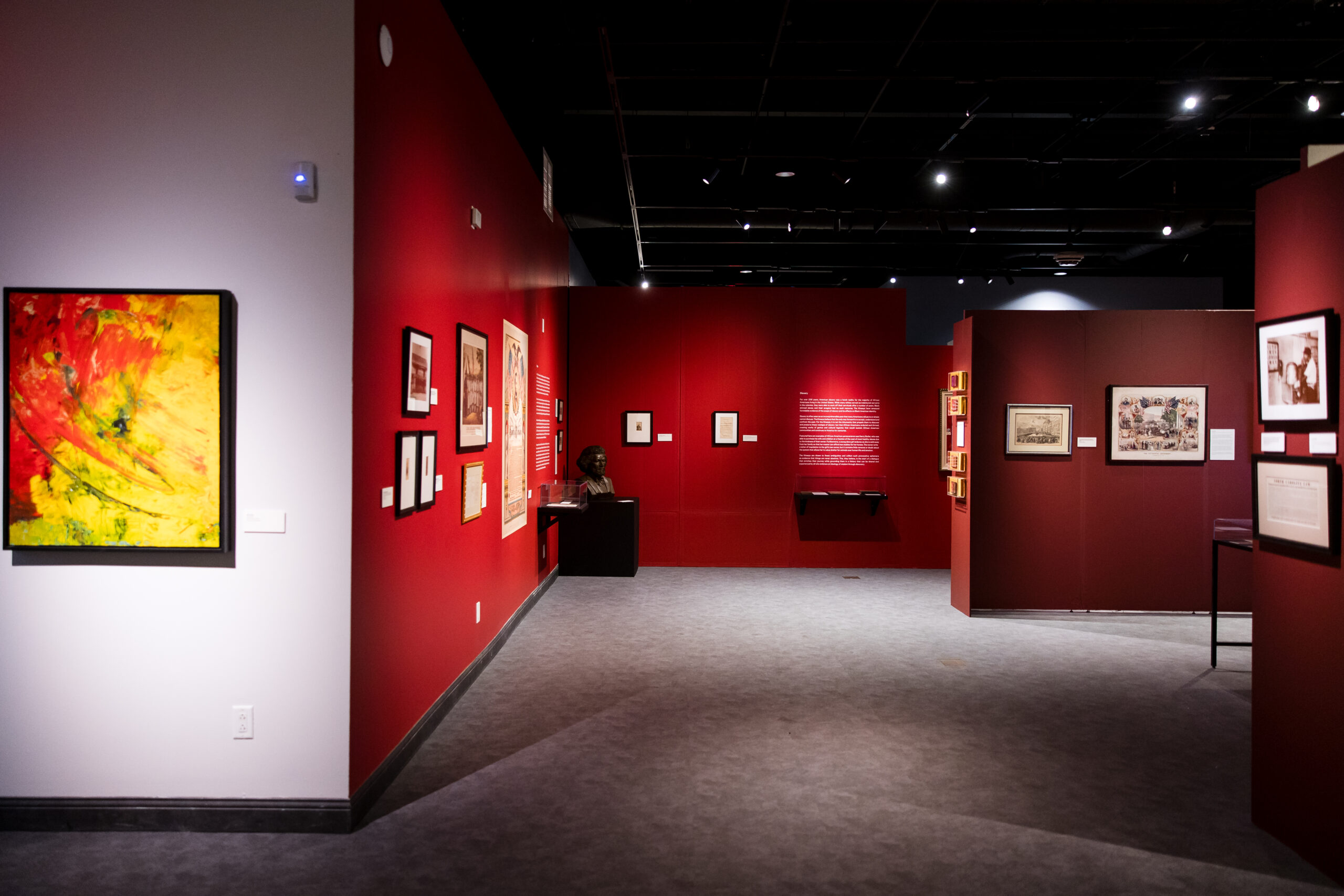
Chronicling The Human Experience
The new exhibition continues the tradition of previous showcases at the Holocaust Museum, each delving into diverse facets of the human condition. Prior to this show, the museum hosted “The Negro Motorist Green Book,” which explored the Jim Crow phenomenon of systemic racism faced by Black motorists across the country. Other exhibits have featured the stories of Syrian refugees, the Armenian Genocide, Nelson Mandela and the Holodomor (famine) of Ukraine during the 1930s.
The current show was inspired by items owned by the Kinsey family, which includes curator Khalil Kinsey and his parents and collection co-founders Bernard and Shirley Kinsey. They have maintained the expansive collection devoted to African-American history and art for decades.
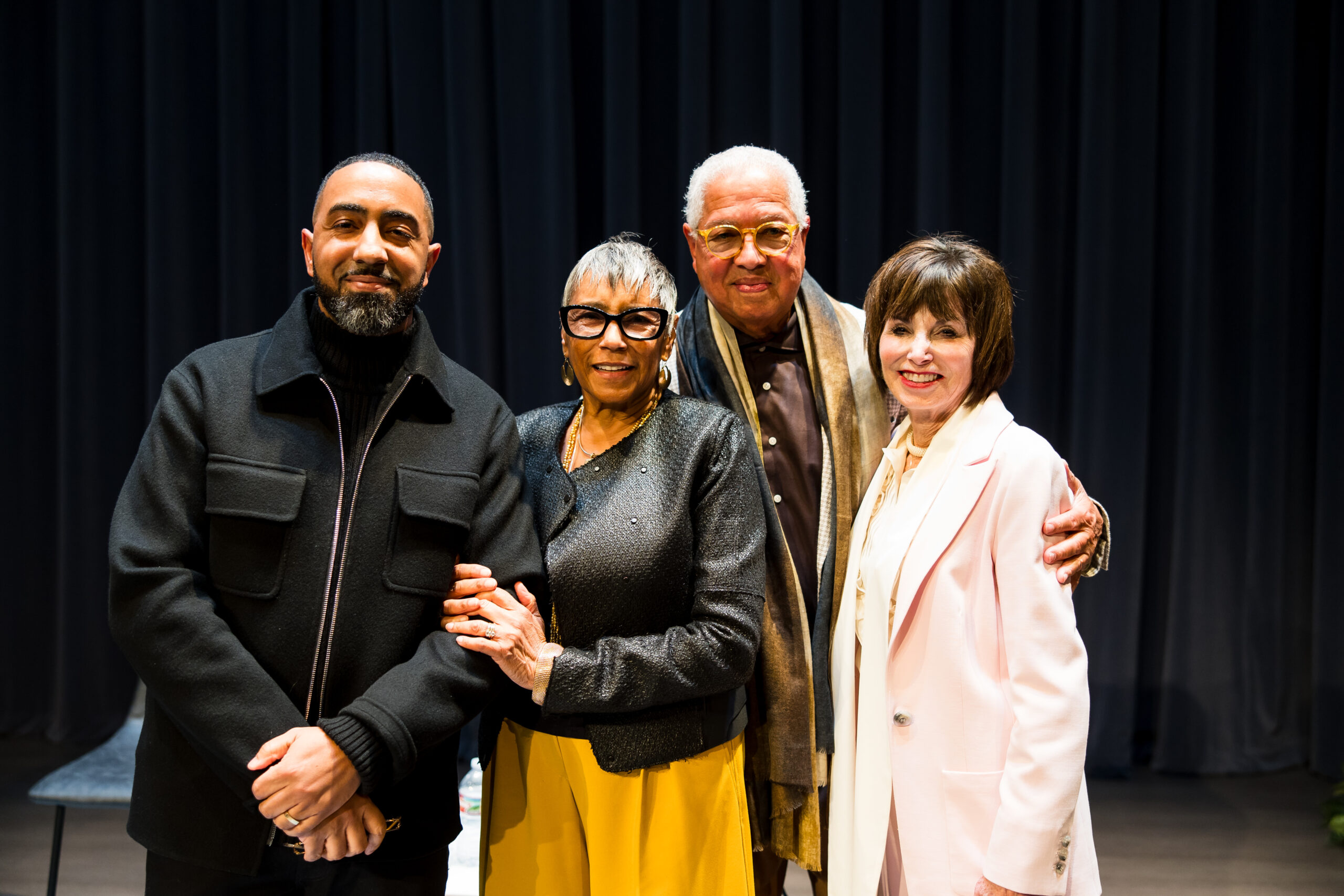
The Gateway to the Transatlantic Slave Trade
Upon entering the space, visitors encounter two wooden doors. These artifacts, known as “The Doors of No Return,” originate from the Cape Coast Castle in Elmina, Ghana. They serve as poignant relics of the Transatlantic Slave Trade as well as reminders of the harsh realities faced by enslaved people departing from Africa.
“The castle doors lead into a section that illuminates the magnitude of the Transatlantic Slave Trade from the 1500s to 1800s,” Khalil says. “It is a really visceral experience. I don’t think people grasp the magnitude of how extreme and brutal the business of slavery was.
“It just puts it in perspective. It’s mind boggling to think about millions of human beings being trafficked and exploited in that way.
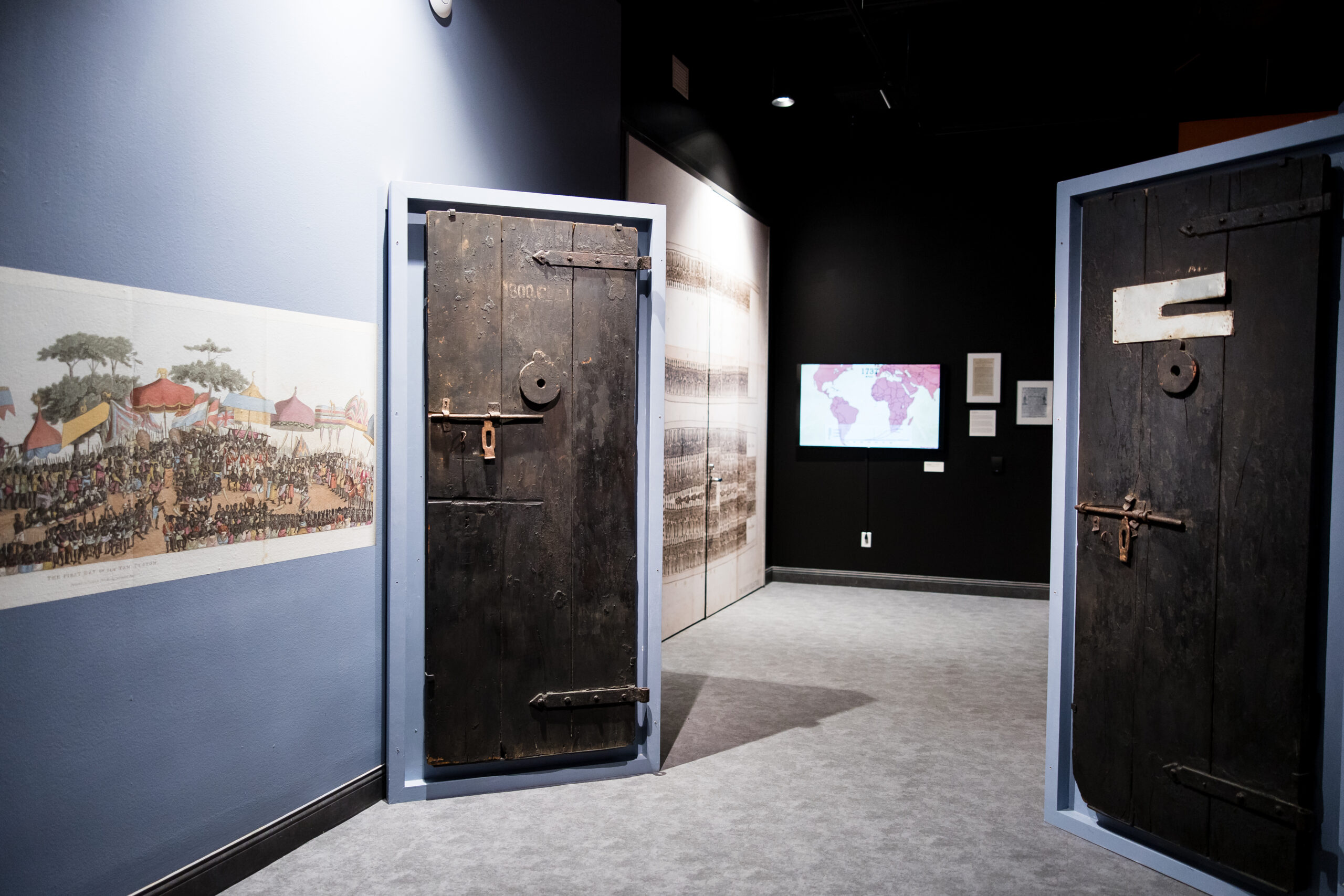
“It is also important to respect, honor and understand that this is a human story. Every bit of all of our stories are human stories, and they are important for us to know.
“The more we do that, the more we actually come together and understand we are in this life and world together.”
As documented in the exhibit, the Transatlantic Slave Trade included 12,000 ships and 40,000 voyages, trafficking a total of 15 million people. Of these, 452,000 people were brought to what is now the United States.
Honoring Historical Figures Through Artifacts
In addition to providing insight into the history of slavery, The Kinsey Collection exhibit includes a wide array of historical artifacts.
Notable 18th-century artifacts featured are Olaudah Equiano’s autobiography from 1789 and Benjamin Banneker’s Almanack from 1795. Also on display is the 1829 manifesto of Afro-Mexican president Vicente Ramón Guerrero. Ramón Guerrero was Mexico’s second president and the manifesto is a rare example of prominent Afro-Mexican leadership.
Additionally, the exhibit showcases a British Parliament document from 1834 commemorating the Abolition of Slavery in the Caribbean (Jamaica).
The collection also highlights histoy making figures such as Phillis Wheatley, early Black Congressional leaders, the Tuskegee Airmen and Marcus Garvey through their artifacts.
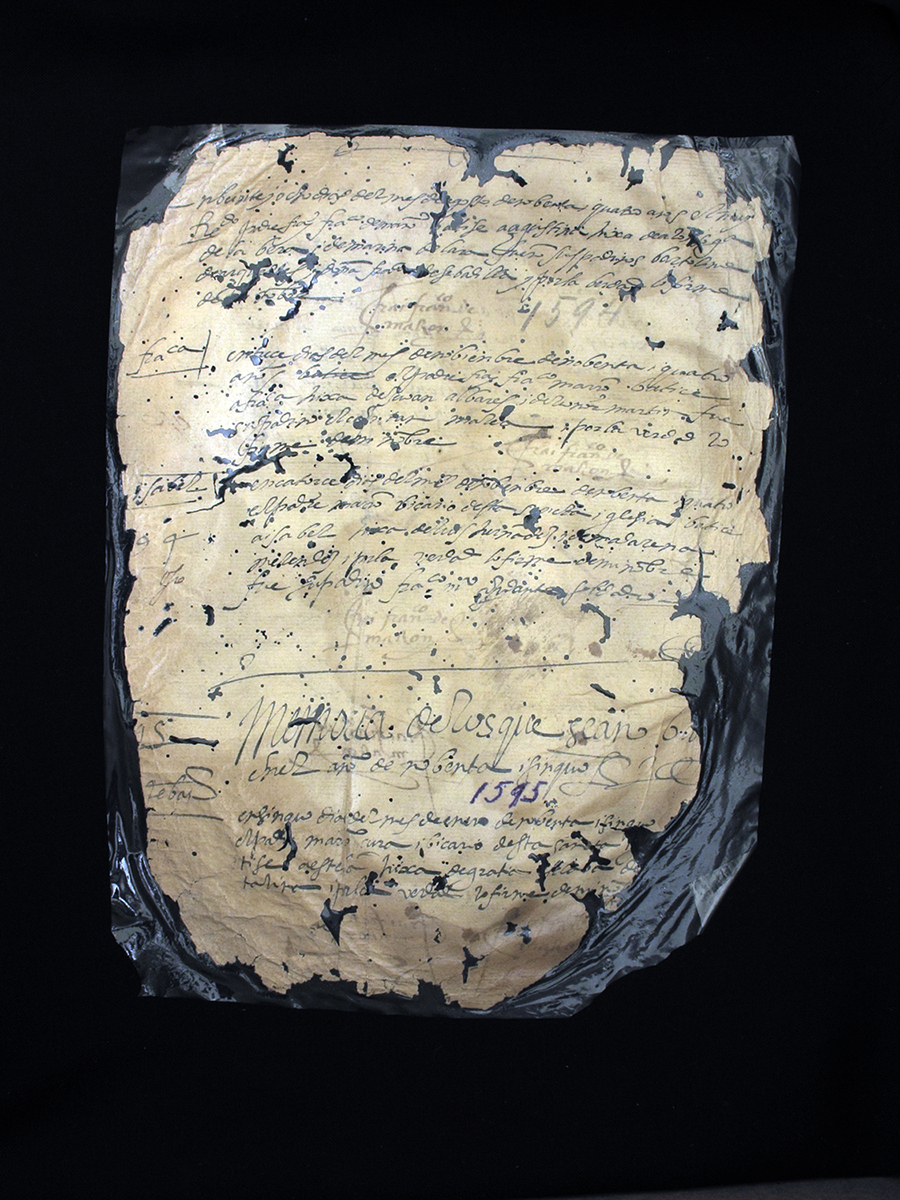
Khalil, whose wife Lisa is of Russian Jewish descent, enthusiastically talks about Julius Rosenwald, a lesser-known figure in American history featured in the exhibit.
“Julius Rosenwald was a Jewish businessman and philanthropist in the early 1900s,” Khalil says. “He worked with Booker T. Washington and built schools for Black youth all across the South.” It is estimated Rosenwald helped create about 5,000 such schools.
“He also had a foundation that supported artists, but primarily Black artists,” Khalil notes. “So many artists became part of the Harlem Renaissance.”
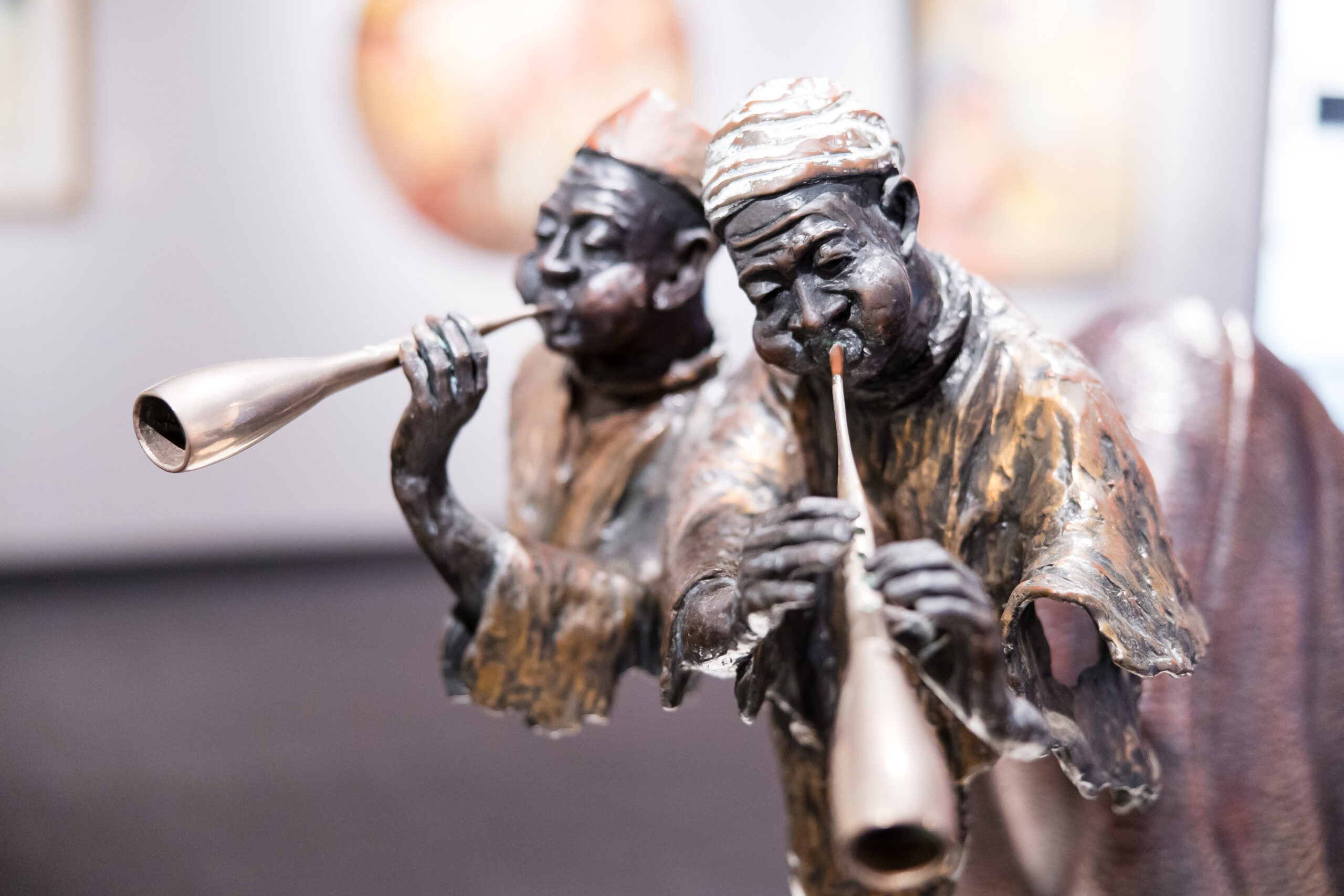
Hidden Gems of Black Art History
While The Kinsey Collection is renowned for its historical significance, it also underscores the Kinseys’ profound appreciation for art. A triptych of family portraits by Mikel Alatza, gracing the exhibit entrance with elements of photorealism, exemplifies this blend of historical preservation and artistic celebration.
The exhibit prominently features rarely seen works by 19th century Black landscape painters like Edward Mitchell Bannister and Robert Scott Duncanson. It also features multigenerational women artists such as Lois Mailou Jones, Elizabeth Catlett and Bisa Butler, spanning different artistic eras.
The collection further showcases Black artists who made significant contributions to Abstract Expressionism, including Norman Lewis and Alma Thomas. The section on abstract artists highlights Sam Gilliam, known for this association with Color Field Painting and the Washington Color School. His polychromatic artwork Untitled (ca. 1970), a vibrant watercolor, acrylic and aluminum creation on Japanese paper, represents a departure from traditional movements.
“I’m a big, big fan of abstraction,” Khalil says.
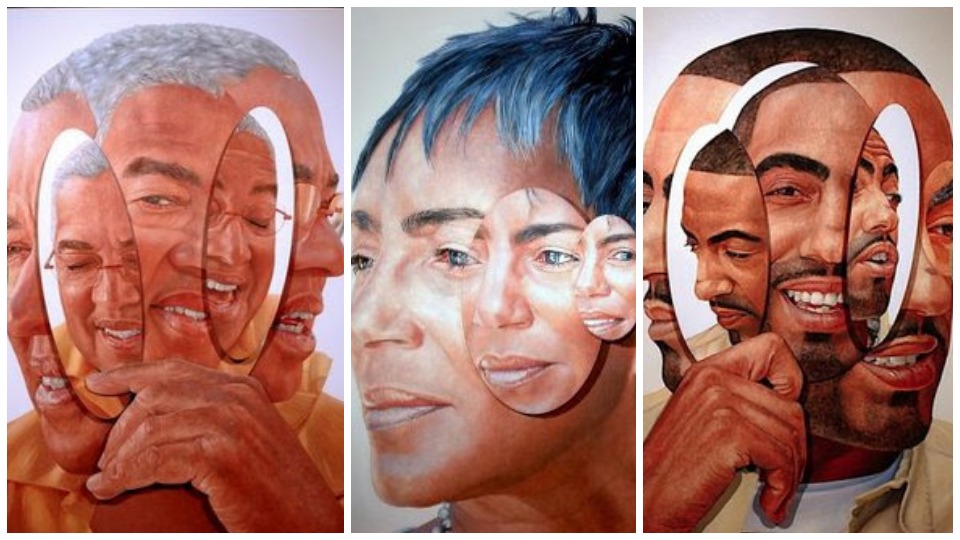
Houston artists are also celebrated in The Kinsey Collection exhibit.
“It’s very intentional when we do a show that we are able to identify artists from the locale where the exhibition is,” Khalil says. “Us showing John Biggers, Floyd Newsum and Ava Cosey is very intentional.”
The Kinsey Collection: A Vital American Narrative
While speaking at Congregation Emanu El synagogue the Friday after the show’s opening, Bernard shared illuminating wisdom and philosophies.
He also spoke of the lesser-known friendship between physicist Albert Einstein and opera singer Marian Anderson. As Bernard noted, Einstein offered Anderson a place to stay when Anderson was denied a hotel room in Princeton, New Jersey due to racial discrimination in 1937.
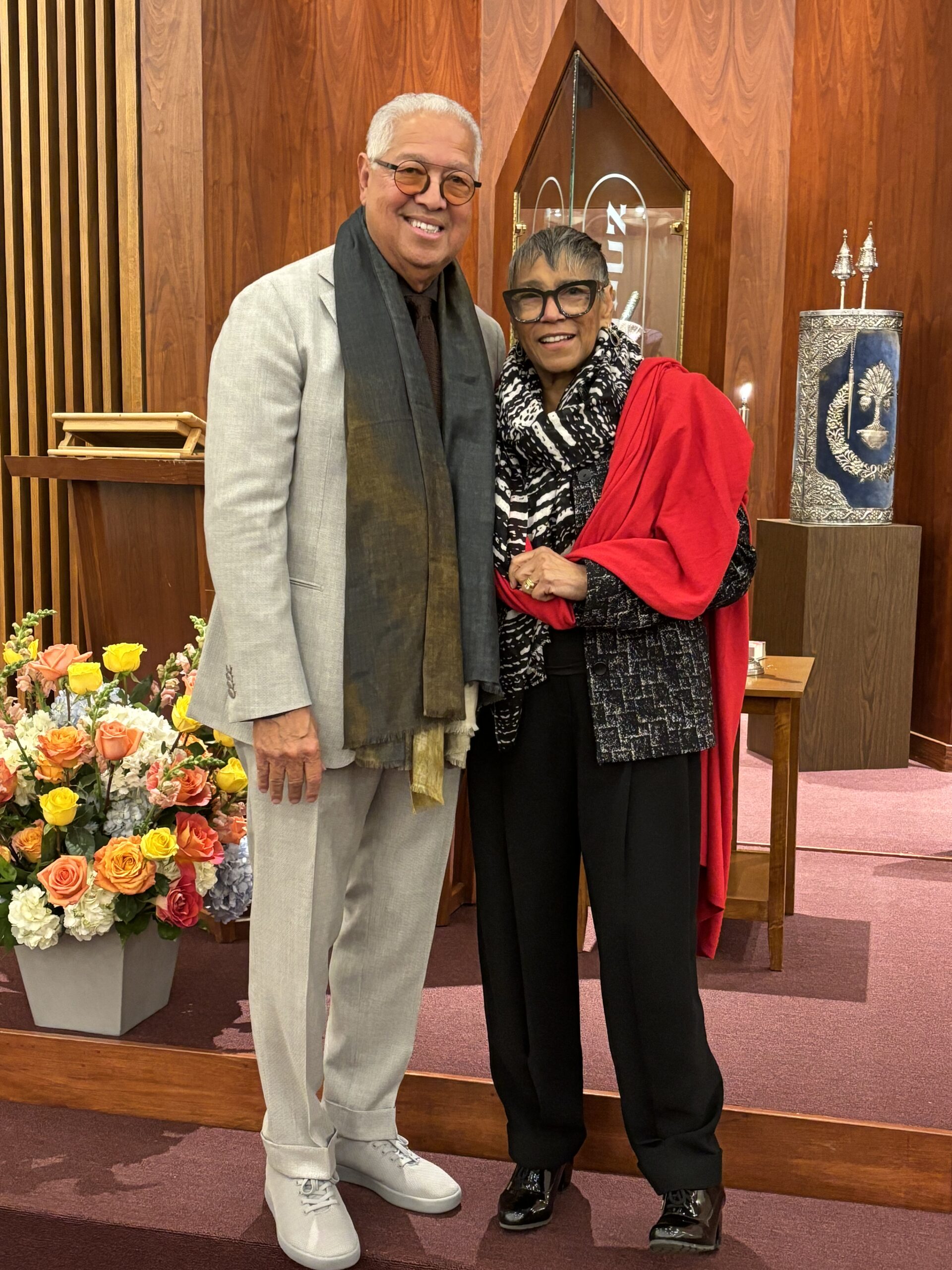
“We practice two simple principles,” Bernard says. “The first principle is that facts matter. The second principle is the concept Learn, Use, Teach.”
Explaining a different approach to classism, Bernard notes: “The measure of our progress is not whether we add more to the abundance of those who have much. But, rather simply, we provide enough for the people that have too little.”
Reflecting on the overall message of the exhibition, Khalil sees The Kinsey Collection as a storytelling vehicle which can disseminate important stories.
“It is actually one of the most vital stories as far as the American story goes,” Bernard says. “Our existence is the bedrock for this American process, and continues to be.
“We are the litmus test for the viability of American democracy and ideals in so many ways.”
The Kinsey African American Art & History Collection is on display through Sunday, June 23 at the Holocaust Museum Houston. For more information, visit the Holocaust Museum Houston’s website. Admission to the museum is free on Juneteenth — Wednesday, June 19.






















































_md.jpeg)

_md.jpeg)

_md.jpeg)

_md.jpeg)




